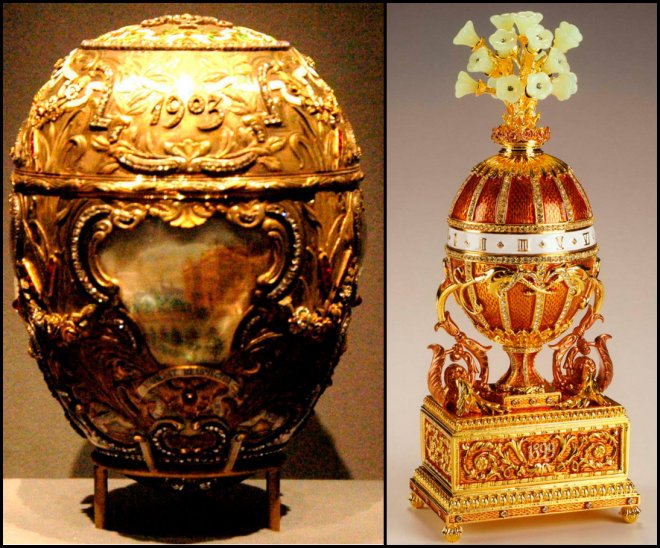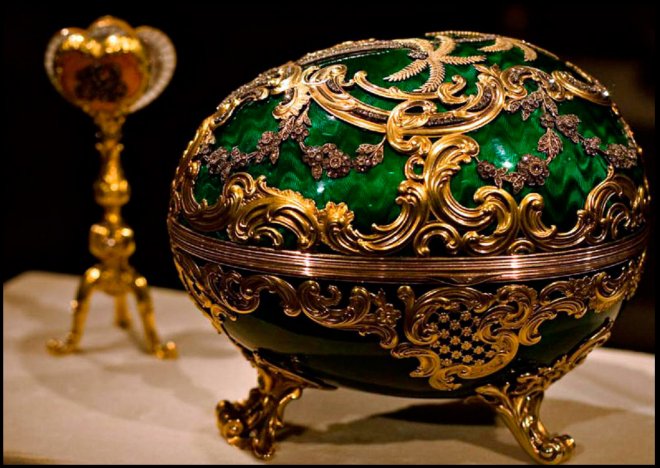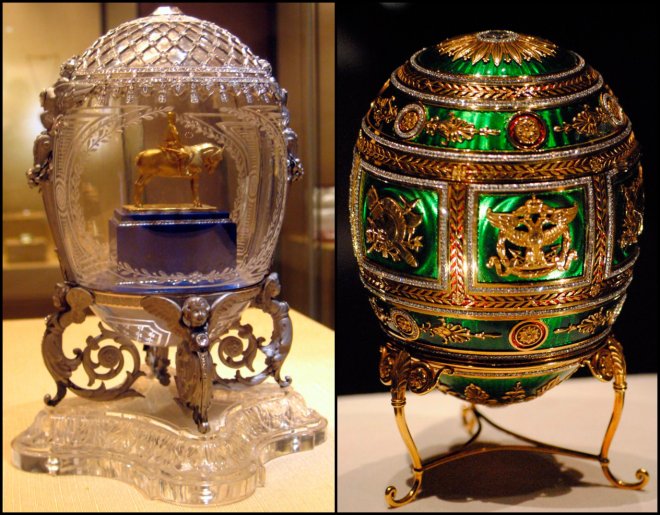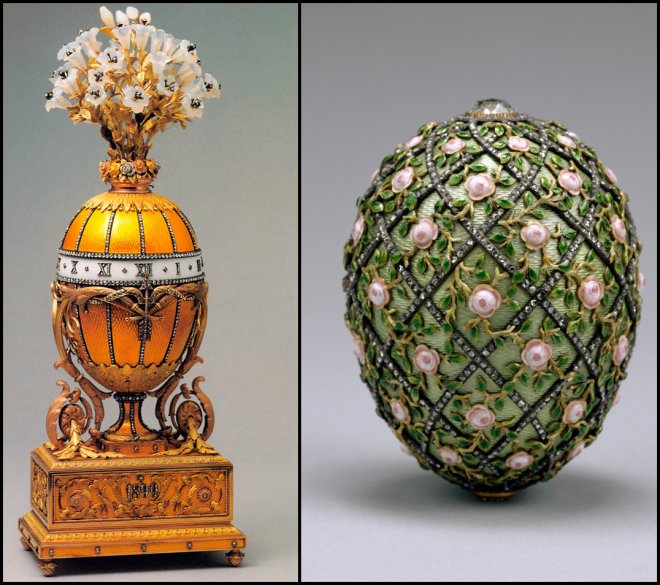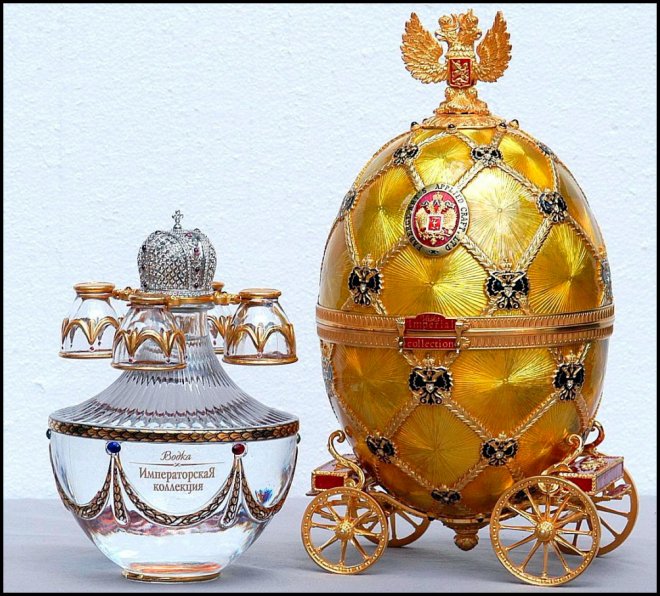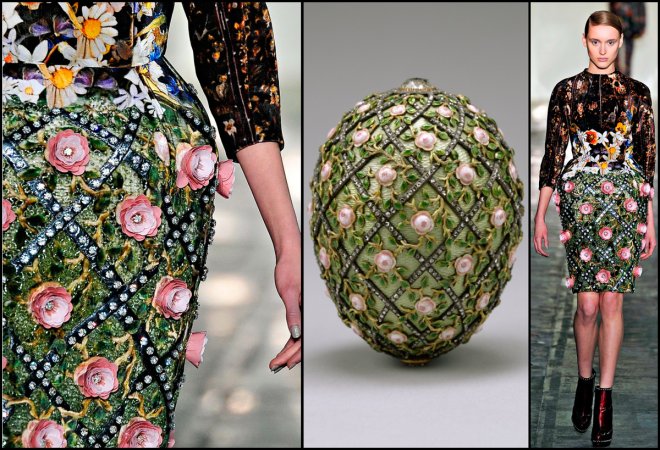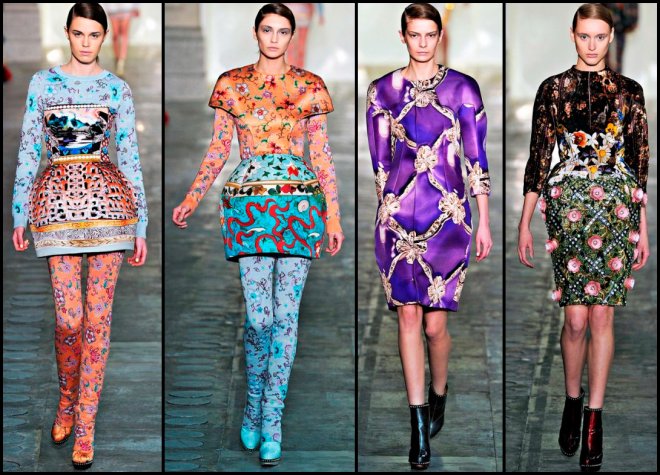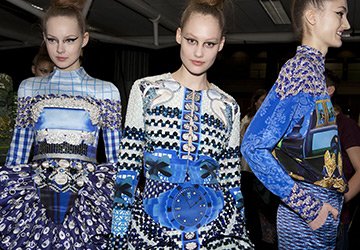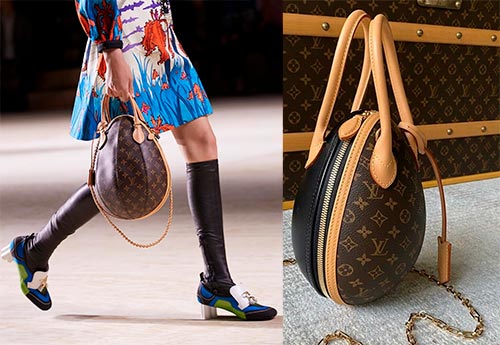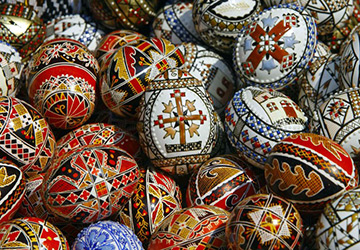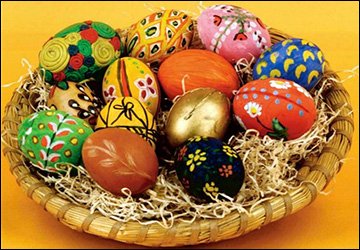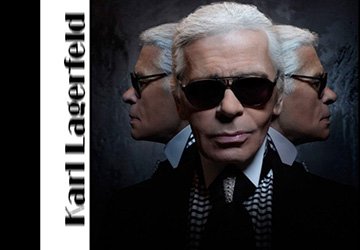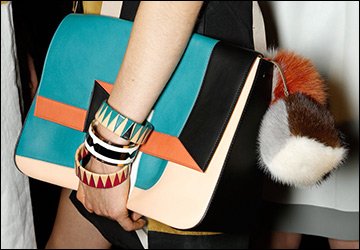Jewelry
Easter eggs by Carl Faberge
Faberge eggs are one of the most expensive jewelry in the world. Truly a royal gift. The first Faberge egg appeared in 1885. It was ordered by the Russian Emperor Alexander III as an Easter gift for his wife Maria Feodorovna. And Carl Faberge and the jewelers of his company took up the creation of this gift.
Carl Faberge was born in Russia, in St. Petersburg. He was born in 1846 in the family of a German from Estonia Gustav Faberge and the daughter of a Danish artist Charlotte Jungstedt. Back in 1842, his father founded a jewelry company in St. Petersburg, Karl also studied jewelry from a young age and at the age of 24 became the head of his father's company. And in 1882, at the All-Russian Art and Industrial Exhibition in Moscow, the products of his company attracted the attention of Emperor Alexander III, the Faberge company began to receive orders from the imperial court. Faberge products were also famous in Europe, so in Paris Carl Faberge was awarded the title of "Master of the Paris Guild of Jewelers". After the revolution, Faberge closed his firm and emigrated to Lausanne, Switzerland, where he died in 1920. In 1923, his sons founded the Faberge & Co firm in Paris.
Carl Faberge produced various jewelry, but it was jewelry eggs, known all over the world as Faberge eggs, that brought him fame.
By the way, the first egg he created in 1885 had its own prototype. In the 18th century, jewelry Easter eggs were made with a surprise chicken inside, and in the chicken itself there was a crown, and in the crown there was a ring. This is exactly what the first egg created by Faberge in 1885 was. An egg presented to Empress Maria Feodorovna, who, like Carl Faberge himself, had Danish roots. After all, one of three similar eggs preserved from the 18th century is exactly the same stored in the Danish castle of Rosenborg (Copenhagen).
Later, a number of Easter eggs were made by the Faberge firm. In total, there are 71 Faberge eggs in the world. And 54 of them were imperial. Alexander III became the founder of the tradition, on Easter he gave Faberge eggs to his wife Maria Fedorovna, after his death this tradition was continued by his son, Nicholas II. He gave Faberge Easter eggs as a gift to his wife Alexandra Fedorovnaand his mother - Maria Fedorovna.
There are also about 15 eggs made by Faberge for individuals. And if the imperial eggs were new every time, each time with a new surprise inside, and the company began to manufacture them a year before the next Easter, then Faberge eggs for individuals often copy the plots of the imperial. This is how 7 eggs belonging to the Kelch family are known. The entrepreneur, gold miner, Alexander Kelkh, like the emperor, gave Faberge eggs to his wife for Easter. The first egg of Kelch, which is called "Chicken Kelch", copies the plot of the first imperial "Chicken" egg. But soon the Kelch couple separated, and their financial situation worsened. They were no longer interested in Faberge eggs. Also, non-imperial Faberge eggs were made to order for Felix Yusupov (a representative of a fairly wealthy noble family, in the future the assassin of Rasputin, so valued by Empress Alexandra Feodorovna), nephew of Alfred Nobel, Rothschilds, Duchess of Marlborough.
Imperial Faberge eggs had quite a variety of plots: it could be clock eggs or eggs with various figures inside, the eggs themselves could also contain various miniatures as a surprise, for example, there was an "Egg with rotating miniatures", inside of which there were 12 miniatures with images of memorial places for the emperor. The most expensive of the Faberge eggs paid for by the Romanovs is the Winter egg. It was made from diamonds, crystal and opals. The surprise of this egg was a basket of anemones.
Carl Faberge Easter eggs after the October coup.
During the revolution, some of the Faberge eggs were lost, most were transported to the Kremlin, where they were kept until 1930. In 1930, the sale of many items began, which undoubtedly constituted the Russian cultural heritage, due to the lack of financial resources from the Soviet government. Many Faberge eggs were also sold. Many of them were bought by Armand Hammer and Emmanuel Snowman Wartzki. Forbes was also an ardent collector of Faberge eggs. His collection consisted of 11 imperial and 4 private Faberge eggs. In 2004, this collection was put up for auction, before which it was completely bought out by the Russian oligarch Viktor Vekselberg. So some of the Faberge eggs returned to their homeland.
Today, in Russia, Faberge eggs can be seen in the Armory (10 pieces), the Vekselberg collection, the Russian National Museum and the Mineralogical Museum. A.E. Fersman RAS.
Many of the Faberge eggs are in various collections in the United States. Several pieces of these miniature treasures are also present in the collections of Queen Elizabeth II of England, Albert Prince of Monaco.
Each of the Faberge eggs has its own destiny, its own history. Only one of Faberge's eggs "Georgievskoe" was able to leave revolutionary Russia together with its rightful owner, Empress Maria Feodorovna, mother of the last Russian emperor Nicholas II.
The "George" egg was created in 1915, after Nicholas II received the "Order of St. George" award. Earlier this award was also awarded to his son Alexey, for his visits to the front line. Nicholas II ordered this egg especially for his mother. His portrait was a surprise. Maria Feodorovna warmly thanked her son for the gift and wrote:
“I kiss you three times and thank you with all my heart for your lovely card and lovely egg with miniatures, good Faberge himself brought. Amazingly beautiful. It’s very sad not to be together. I sincerely wish you, my dear dear Nicky, all the best and all the best and success in everything. Your dearly loving old Mama. "
Mary Katrantzou 2024-2025
Today there is a whole website of the Vekselberg collection (https://www.treasuresofimperialrussia.com/r_explore.html), where you can learn in detail the history of each of the Faberge eggs in this collection.
It cannot be argued that all the eggs were created by Carl Faberge himself. After all, as soon as a new order was received, a whole team of the firm's jewelers immediately began to work on it. The names of many of them have survived. This is August Holstrom, and Henryk Wigstrom, and Eric Collin. And Mikhail Perkhin, who worked on the creation of Kelch eggs.
But in addition to genuine Faberge eggs, their numerous fakes are also known, which sometimes are in no way inferior to the originals in their elegance. So in the mid-1990s, the Metropolitan Museum (New York, USA) hosted a whole exhibition dedicated to fake Faberge eggs.
Since 1937, the Faberge brand has not belonged to the descendants of Carl Faberge himself, who sold it to American Samuel Rubin. In the 20th century, a variety of products were produced under this brand: from perfumes and clothing to films. And in 2009, the Faberge jewelry house appeared, which belongs to the South African businessman Brian Gilbertson. He acquired all the rights to the brand in 2007. In 2024, Russian businessman Viktor Vekselberg tried to buy out the Faberge brand, but he failed.
This is the story of the most famous, most luxurious, most fabulous and most expensive Easter eggs.
Comments and Reviews
Add a comment
Rating news
Shades of clothing that make women look younger
What shades of hair make women younger: rules and photos
Funny wedding dresses - photos and ideas
12 most expensive down jackets for the winter
How to look 25 at 40: tips from supermodels
Beautiful schoolgirls
Anti-aging haircuts and hairstyles for women
Fashionable skirts for autumn and winter
Fashionable women's trousers for the cold season
Fashionable and stylish sandals for summer 2024
Spring-summer 2024
 Fashionable dresses and tops with thin spaghetti straps
Fashionable dresses and tops with thin spaghetti straps
 Bandana tops: how to wear stylishly and beautifully
Bandana tops: how to wear stylishly and beautifully
 How to put together the perfect men's wardrobe for the summer
How to put together the perfect men's wardrobe for the summer
 Fashionable shorts for spring-summer 2024
Fashionable shorts for spring-summer 2024
 Fashionable skirts for spring-summer 2024: a guide to online shopping
Fashionable skirts for spring-summer 2024: a guide to online shopping
 The most fashionable dresses spring-summer 2024: styles and colors
The most fashionable dresses spring-summer 2024: styles and colors
 Fashionable total look 2024: ideas of images and trends
Fashionable total look 2024: ideas of images and trends
